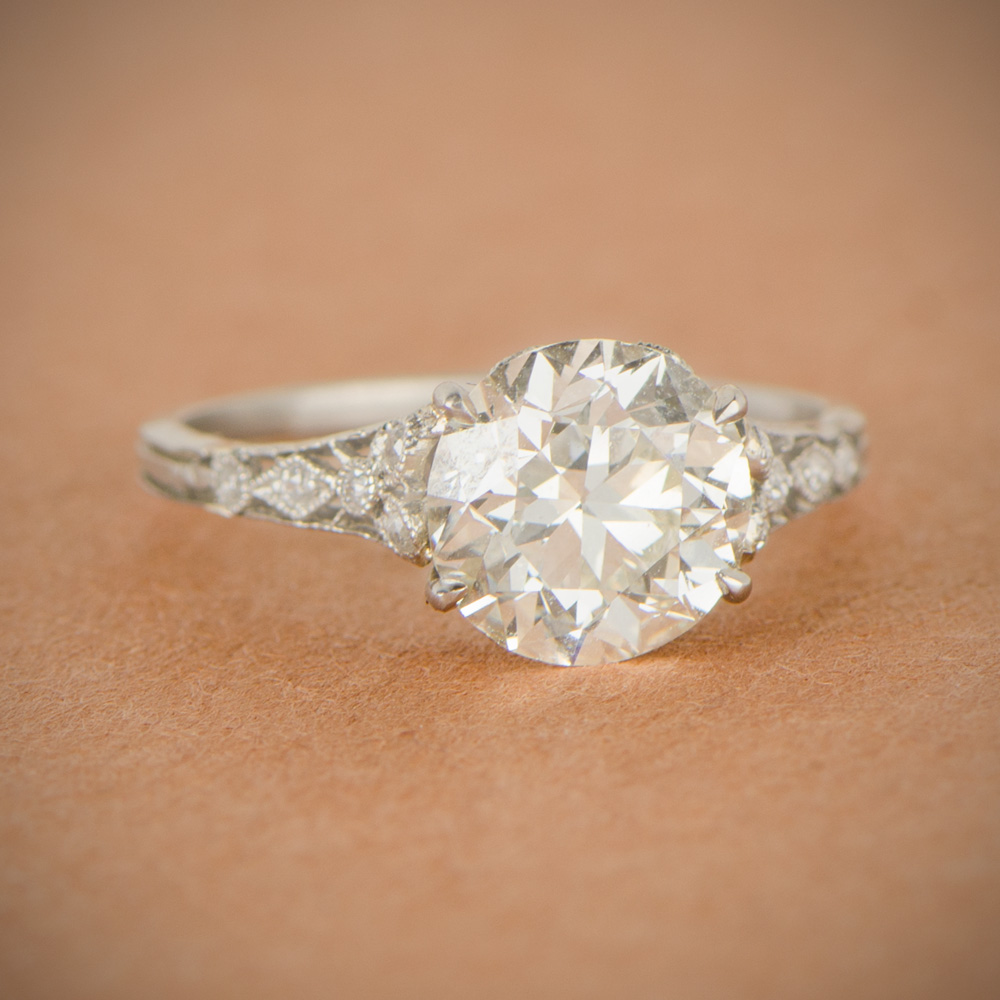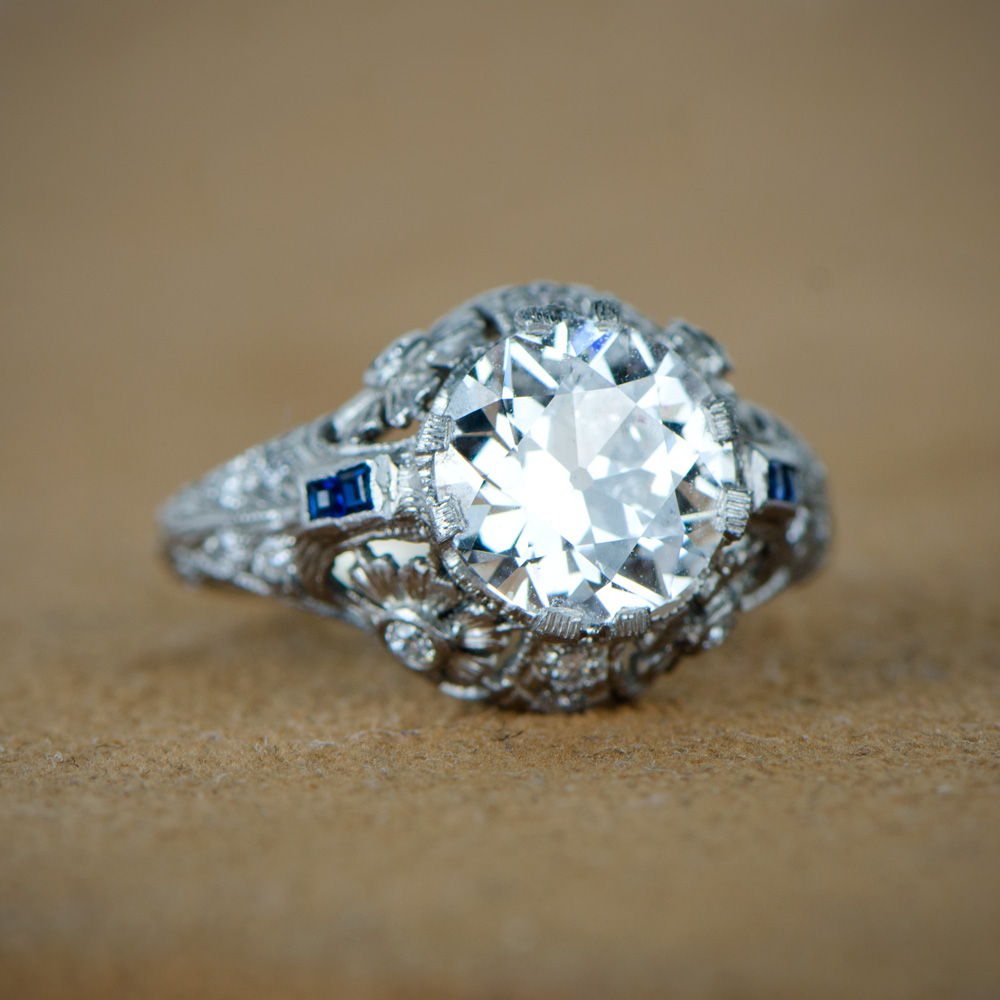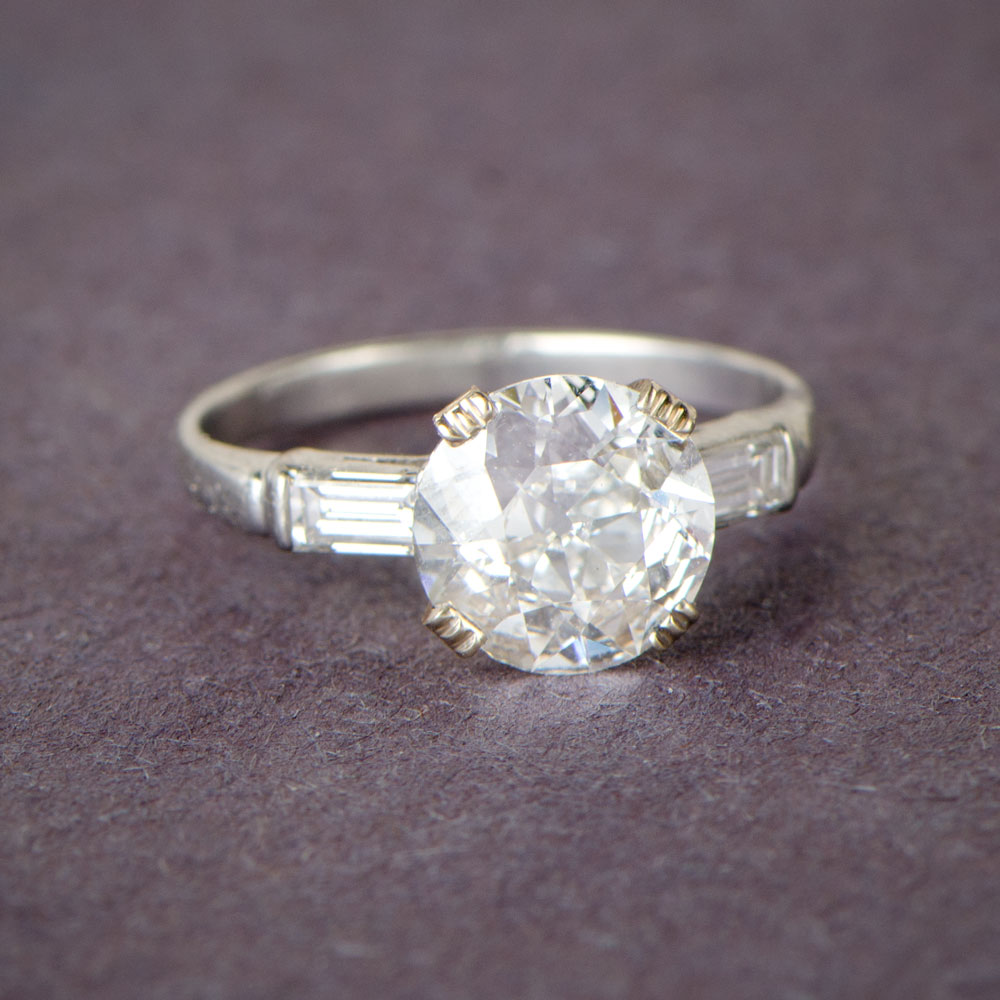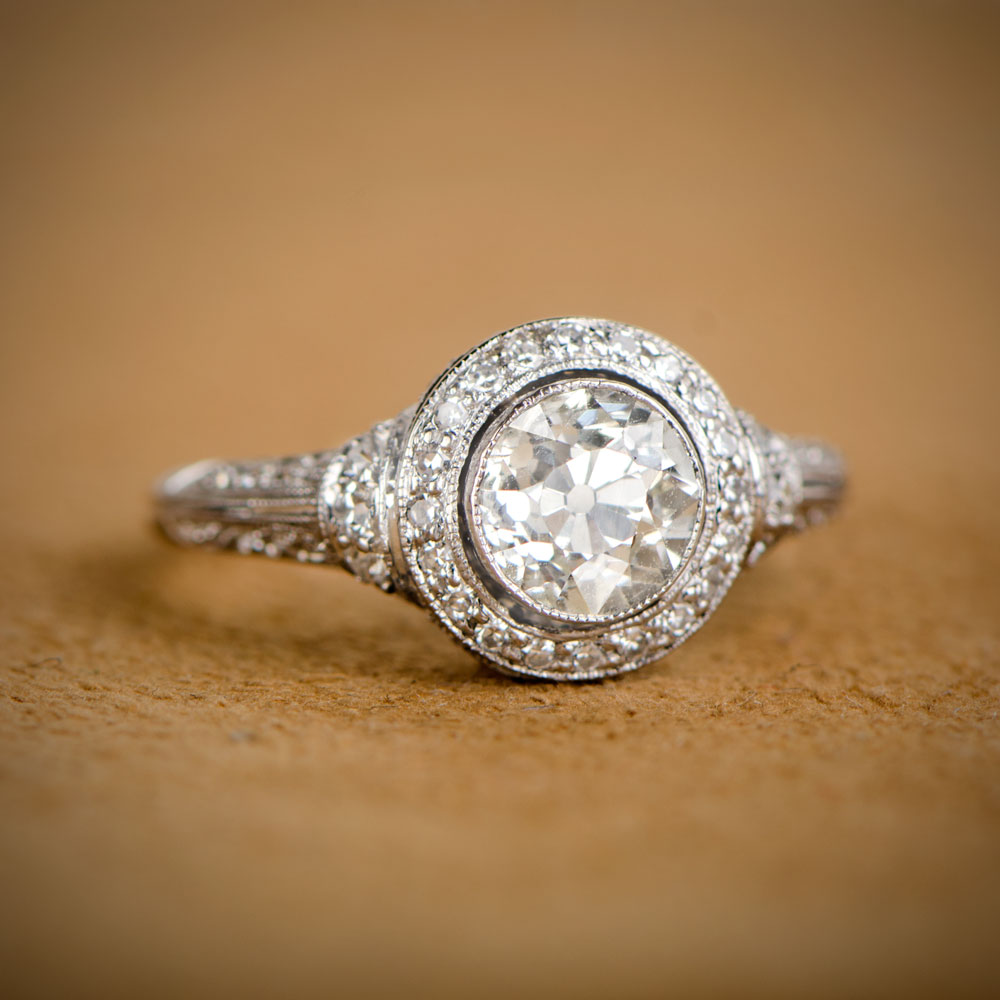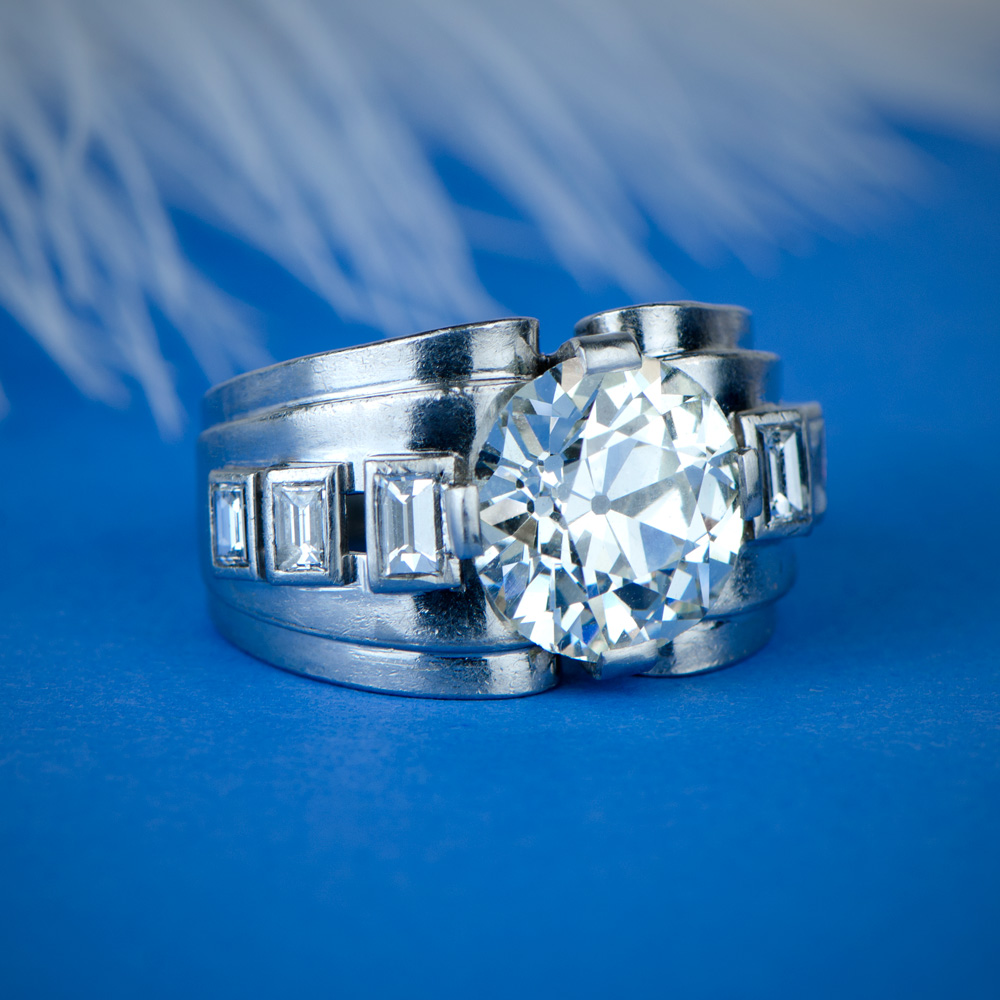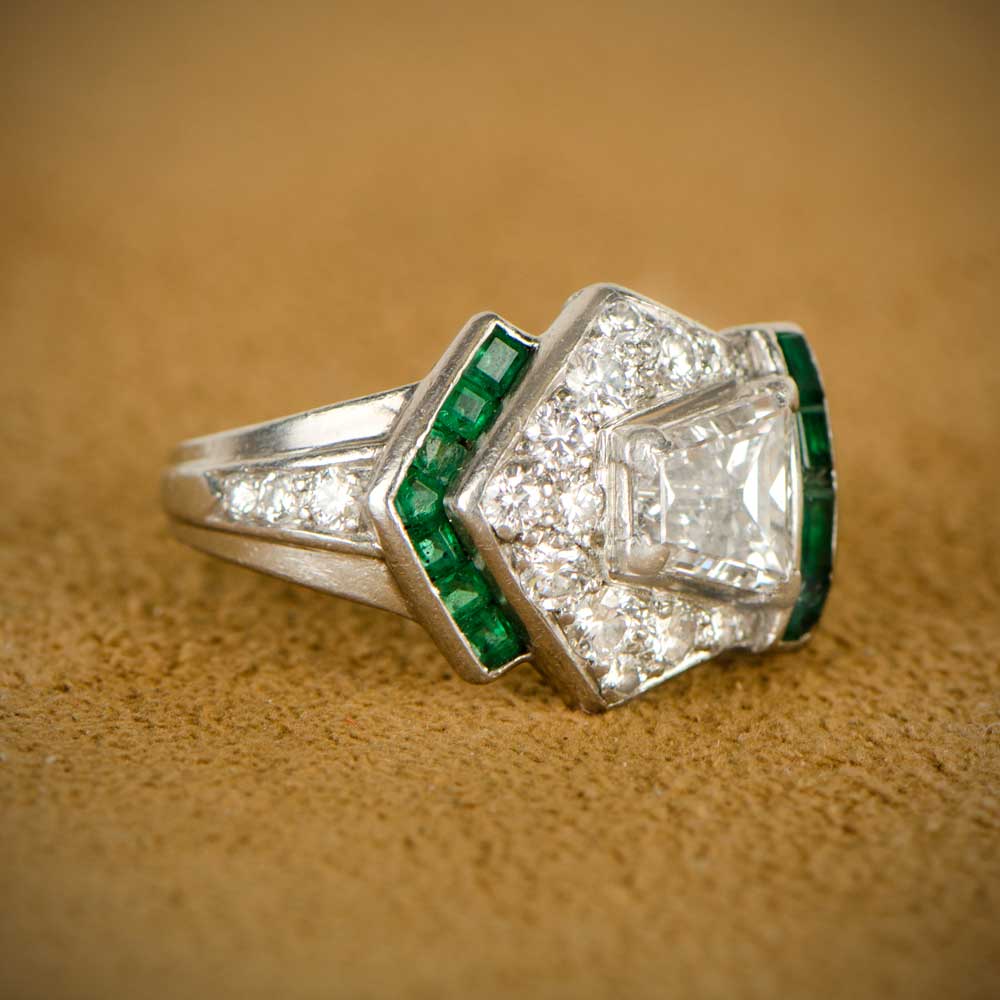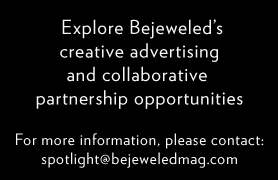ESTATE DIAMOND JEWELRY: SAYING I DO TO ANTIQUE AND VINTAGE ENGAGEMENT RINGS
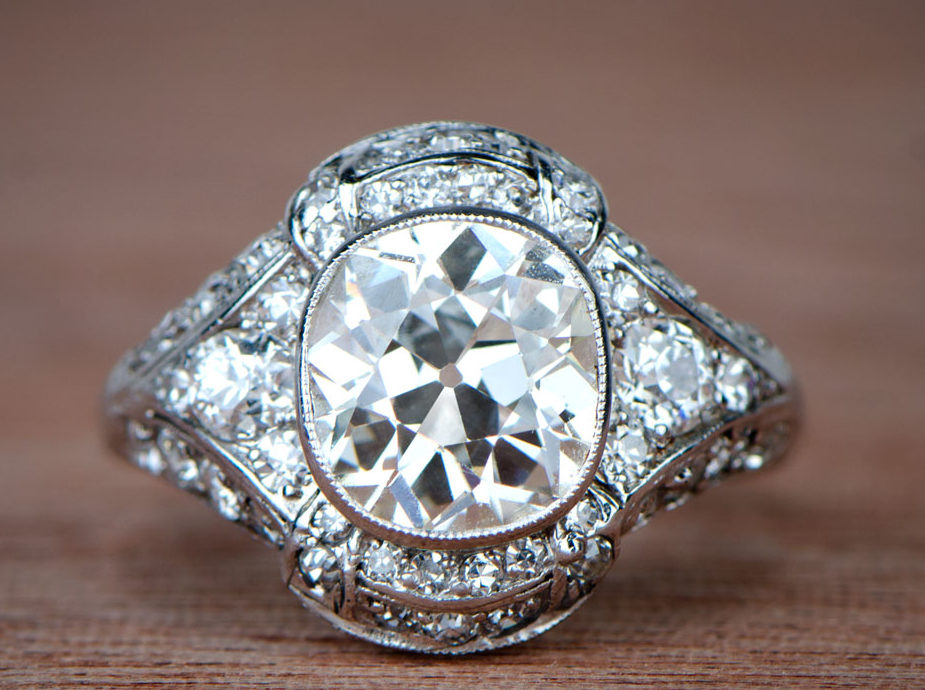
In bridal jewelry, more and more woman are saying ‘I do’ to antique, Art Deco and Retro engagement rings. The cultural shift in the new millennium toward women wanting to show off their individuality rather than follow their peers, a new appreciation for jewelry with history, and information being more readily available due to the internet have all led to something ‘old’ becoming the new norm for brides-to-be. Whether you’re attracted to feminine floral or lacey openwork or you prefer streamlined silhouettes, rings from different time periods might be just your style.
Michael Khordipour, owner of M. Khordipour and Estate Diamond Jewelry, which sells engagement rings from many eras, explains: “Approximately 10 to 15 years ago, we saw a real boom in women looking at Edwardian and Art Deco engagement rings. The time was right – women wanted to stand out rather than blend in and desired one-of-a-kind pieces. Since then they have branched out and also favor styles that range from Victorian through Retro `40s styles.”
Whatever your circumstance – first engagement, second wedding, or a sudden realization that your personal style has totally changed in the past 20 years, antique-through early 20th-century rings provide a wealth of diamond cuts, colored gemstones, styles and details.
Michael Khordipour takes us on a tour of the popular ring styles of different time periods and their aesthetics to find the perfect left-hand engagement ring for you.
VICTORIAN
“Due to the length and the cultural and societal changes of the Victorian era, (1837-1901) it was split up into three periods: Romantic, Grand and Aesthetic. Rings ranged from sentimental motifs of double hearts tied together to entwined snakes like the one Prince Albert gave to Queen Victorian upon their engagement. Due to the Industrial Revolution and more advanced stone-cutting techniques, there are a range of beautiful mine-cut and rose-cut rings in round, oval and cushion shapes in both diamonds and colored gemstones. I suggest you opt for a more classic Victorian style that you will want to wear every day. This includes the early cluster with a colored-gemstone center stone and mine-cut diamond surround. I also recommend the classic five-stone Victorian style, which sits slightly higher on the finger than its Georgian predecessors due to its open back and filigree gallery. This style is available in all cushion/old mine cut diamonds and also can range from alternating diamonds and gemstone to all gemstones styles with tiny rose cuts as accents between the stones. The stones of Victorian engagement rings were often set in silver on top of high-karat gold, but later styles featured platinum on top of gold.”
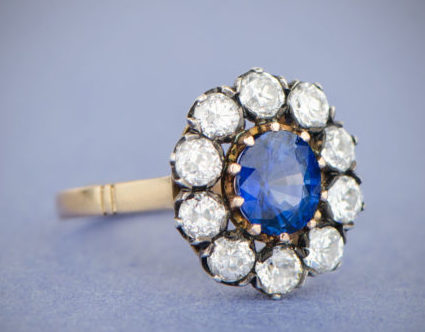
A rare sapphire engagement ring, adorned with a halo of old mine cut diamonds. Circa 1890.
EDWARDIAN
“The Edwardian period, which ranged from approximately 1905 to 1915, was also known as Belle Époque in France. The change in fashion of the day as well as the refinement of platinum as a metal for jewelry allowed for lighter, airier and more open designs. Intricate filigree and piercing work surrounded diamonds in platinum over 18K gold and eventually pure platinum. The garland style with its leaves and floral motifs also provided the design around cushion, mine-cut and newer European-cut diamonds, which featured more facets and offered more sparkle that the earlier cuts. Styles for engagement rings range from wider to tapered bands with filigree and piercing work surrounding center round European diamonds or more tapered bands with pretty, lacey patterns on the shank. There are versions with pops of color in side stones of emerald, ruby and sapphires or inset in the band.”
- A pristine and delicate Antique Edwardian Engagement Ring. Circa 1910
- An Edwardian Diamond Engagement Ring, featuring floral motif with detailed openwork. Circa 1910.
ART DECO
“This movement spans the early 1920s through 1935 and witnessed a dramatic change in jewelry styles, influenced by architecture, travel and art and the changing roles of women in society. During the beginning of the movement, pieces were all white platinum with various cuts of diamonds. Styles were streamlined, geometric and pared down. The brilliant cut was developed, yet many designers of the era still appreciated the character of cushion and European cuts. Rings also featured baguette side diamonds and trillion and marquise shapes. As we moved to the later part of the era, globalization and influences from various cultures began affecting the designs, which took on an Asian or Egyptian influences with diamonds, accented by onyx and colored cabochon-cut gems as center stones.
- bold Antique Art Deco Cushion Cut Engagement Ring, adorned with diamonds and set in handcrafted platinum. Circa 1920.
- A rare Art Deco Diamond Engagement Ring, featuring diamond accents on the shoulders. Circa 1930
RETRO 40s
During World War II, platinum was used for the war efforts and jewelers found new ways to be creative with gold and semi-precious or synthetic gemstones at the time. After the war was over, pieces took on a more fluid approach to the clean lines of the Art Deco movement with shapes and details that represented the pleats of fabrics. Center stones tended to be smaller and an integral part of the total design of the ring. Gemstones in baguette and princess cuts followed the lines of the designs. Then in 1947, the diamond engagement ring became big business with the genius of an advertising agency. The single line ‘A diamond is forever’, the brainchild of advertising executiveFrances Gerety of N.Y. Ayers was devised for diamond distributors DeBeers. The slogan reinforced the diamond as the gem for engagement rings andcreated a belief that diamonds were the key to a couple’s enduring love.It was a history-making moment but from then up until the late 20th century and the new millennium with its innovative new talents, it did little for the personality and individual beauty and craftsmanship of the engagement rings that came before.
- A bold French Retro Diamond Engagement Ring. Circa 1945.
- A belt motif diamond and emerald ring. Circa 1940.
This article is in collaboration with Estate Diamond Jewelry

